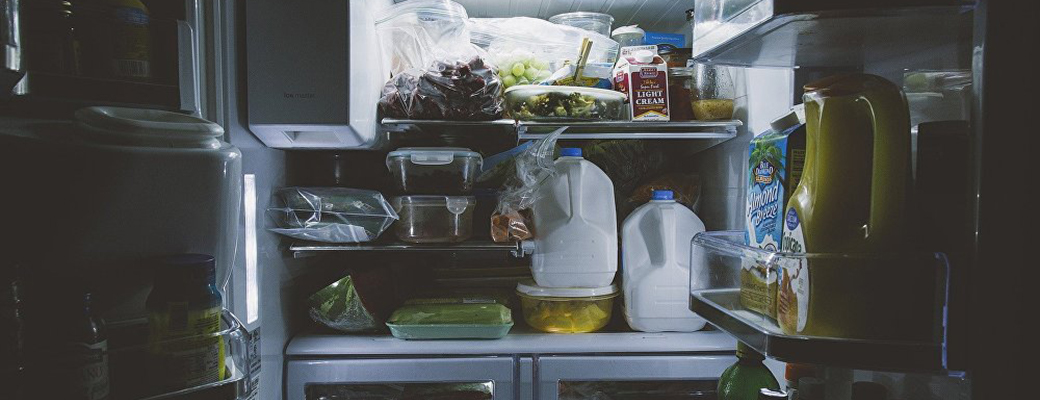10 foods in the dietitian’s fridge
1. Plant milk
Soya milk, coconut milk, rice milk, oat milk and hazelnut milk – there’s now a vegetable milk for every taste. Almond milk goes well with coffee, oat milk with cocoa, rice milk with smoothies and coconut milk with puree soups. Even adding vegetable milk to your oatmeal will allow you to discover a new taste in your breakfast. Disputes about the harm of cow’s milk have not yet subsided, while the vegetable can clearly gain vitamin B group, diversify the diet.
2. Eggs
Nutritionists also argue about eggs, but I take the position that they are a unique product in terms of pure protein content. However, it is not recommended to eat more than two in a day. Apart from that, the product is very versatile: eggs can be boiled, made into omelettes and scrambled eggs. In addition, they are at the base of so many dishes, for example frittatas and quiche with vegetables.
By the way, we’ve done an up-to-date review (up to 2019) of all the scientific studies on the benefits / harms of eggs. Conclusion: 2 eggs a day is perfectly safe (or rather healthy)!
3. vegetables
Frozen and fresh vegetables: cucumbers, tomatoes, potatoes, carrots, broccoli and cauliflower are must-haves in the fridge. They are used not only as a side dish, but also as a stand-alone dish in the form of puree soups and salads. Simply add the herbs and a spoonful of olive oil to the soup and chopped vegetables – it makes a very healthy and light dinner.
4. Sauerkraut
Sauerkraut is a true natural probiotic that helps your intestinal microflora stay healthy. It strengthens the immune system by increasing the number of beneficial bacteria. Sauerkraut is ideal as a salad and as a side dish to fish.
By the way, in general, feel free to add more fermented foods to your food. Countries with a high life expectancy (e.g. Japan, South Korea) eat a lot of fermented foods. Read more in the article “12 reasons why Asians are healthier”.
5. Fruit
Fruit is the coolest alternative to desserts. It’s also a topping to porridge and yogurt. Combined with nuts is considered the healthiest and easiest snack.
You can eat up to half a kilogram or even a little more fruit a day without any fear of harm from fructose (for more information, see the article “Fructose: benefits and harms”).
6. Seeds and nuts
Seeds and nuts are a source of healthy fats and vitamins. I advise soaking them overnight and putting them in the fridge – this minimizes phytic acid, which binds with iron, zinc, calcium and impairs their absorption.
For more information on phytic acid, how useful it is and how much of it is harmful, read ‘Phytic Acid: The Anti-Nutrient from Cereals, Beans and Seeds’.
7. Legumes
For this reason, I also recommend soaking beans. After soaking they’re also quicker to prepare. For example, you can soak chickpeas overnight and then bake them in a pan in the oven. They make a really healthy protein snack.
8. Tuna (canned fish)
Healthy omega-3 fats and lots of protein (tuna has almost 20 percent protein per 100 grams) make for a healthy diet.
9. Protein bars
The easiest way to quickly recharge and replenish your protein intake is to eat a protein bar. Carefully read the contents and prefer sugar-free bars with natural ingredients.
If you have difficulty reaching your protein intake (when gaining muscle mass or losing weight while maintaining weight, it is advisable to eat 1.5-2 g of protein per kg of body weight per day), then you can resort to such a “fire” option as a protein bar. However, it is certainly much preferable and healthier to get protein from regular foods: fish, meat, dairy products (cottage cheese, kefir, cheese), legumes.
10. Mushrooms
The mushrooms are extremely useful because they contain 18 essential proteins, amino acids, as well as healthy fats: lecithin, glycerides of fatty acids and unsaturated fatty acids. Dried mushrooms are 75% pure protein. Not to mention vitamins, there’s the B group (B1, B2, B3, B6, B9) as well as A, D, E, PP.

